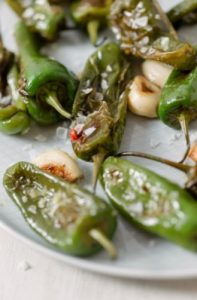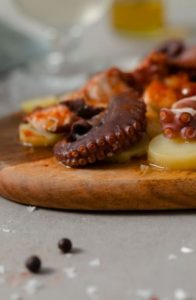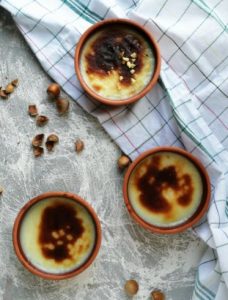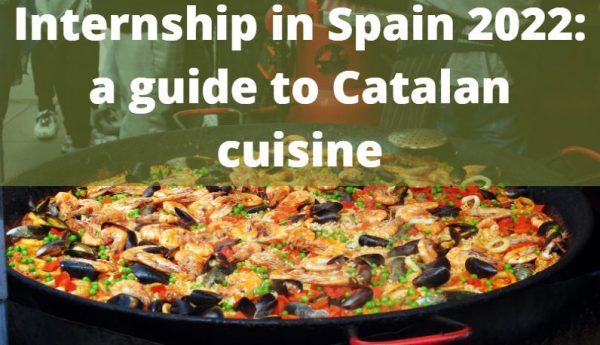Internship in Spain 2022: a guide to Catalan cuisine
If you are a lover of good food, you will surely enjoy tasting it during your internship.
Talking about gastronomy is like talking about history, culture, creativity and the generations that have lived through the years from its beginnings until today.
Catalan cuisine is no stranger to this premise, whose creations have had a great impact on the world’s gastronomic development, as well as on culinary history.
To give an example of the latter, Catalan cuisine has distinguished itself in history thanks to an anonymous author who wrote one of the five oldest culinary manuscripts in 1324. And it will help you during your internship !
Moreover, Catalan cuisine, a worthy representative of Mediterranean gastronomy, serves as a showcase to show the world the richness of its people and the privilege it has received by settling in the Catalan territory.
On the one hand, in terms of population, Catalan cuisine demonstrates the evolution of its people, with recipes that have been handed down from generation to generation. You can also pass them on at the end of your internship!
This has allowed this gastronomy to formulate its own culinary innovations, without forgetting its roots and adapting to modern trends, all of which has allowed it to reach a maturity with great refinement, which makes it a unique heritage in the world.
On the other hand, the environment and above all the geography have given it a unique diversity and identity.
We can say, therefore, that Catalan cuisine has been able to take advantage of its varied landscape, with a gastronomic richness that involves the mountains, orchards and coastlines of its territory.
Now, to close this introduction, we will present a brief gastronomic guide to some of the varied and tasty dishes that represent the landscape. We begin, then, with this immersion in the flavors, innovation and tradition that you will be able to taste during your internship.
Escalivada:
One of the most traditional and most common dishes in the homes and restaurants of Catalonia. It consists of a mixture of vegetables, such as onion, tomato, bell pepper and eggplant, accompanied by olive oil, also known as liquid gold, a very common ingredient in Mediterranean cuisine.
Sometimes it is also served with olives and anchovies, and can be served hot or cold. In addition, its name comes from “escalivar”, since this cooking technique is used in its preparation. However, it can also be cooked in the oven.
Xató:
Also called Xatonada, it is a typical dish of the Catalan coast whose origins date back to the time of the wine festivals. Its preparation requires products from the province of Barcelona such as tuna, anchovies, escarole, cod and olives, with romesco sauce as a condiment.
Empedrat:
If you’re looking for dishes to enjoy during the hot season, a great option
to consider is the empedrat.
If your intention is to opt for a more traditional meal, empedrat with white beans is the option, otherwise, there are also recipes with other legumes, as well as being accompanied by different vegetables and esqueixat, a salad made with crumbled cod, peppers, onion, olives, tomato, olive oil and vinegar, whose contrast of flavors has made it one of the tastiest dishes in Catalan cuisine, despite its simplicity.
Coca de recapte:
A delicacy that was enjoyed with the arrival of produce from the garden, when all the ingredients that could be provided by local families were gathered and then shared among all.
To understand the concept of the dish, it could be described as a homemade pie made with flatbread dough baked in the oven, along with roasted vegetables and other accompaniments such as tuna, sardines, sausages, herring and more.
Trinxat:
We have already talked about one of the most famous and suitable dishes for the summer period. In contrast to this option, and focusing more on the autumn and winter seasons, we find one of the most traditional dishes of Catalan cuisine, the trinxat.
This dish is undoubtedly a recipe that can satisfy anyone’s hunger. It is a mixture of potatoes, cabbage, garlic and bacon, whose final presentation is similar to that of an omelet.
Spinach Catalan style:
From the Middle Ages to become one of the most popular dishes in Spain. This massive presence in Spain is mainly due to the great mixture of ingredients, contrasts, textures and flavors.
As for its preparation, it is based on spinach cooked in salted water and then served with sultanas, ham, garlic and pine nuts.
Catalan stew or escudella:
A dish whose heritage dates back to the 14th century, which makes it a recipe for special occasions, especially during the winter season and Christmas dinners. It has also entered the culinary dictionary as a synonym of celebration, family togetherness and happiness.
Among its ingredients are meatballs prepared in the same broth, cabbage, potatoes, chickpeas and spaghetti, rice or cookie.
As for the latter, it resembles a galette soup and the difference with escudella is that the ingredients are made in the same broth.
Zarzuela/Sarsuela:
 This is undoubtedly a dish that envelops you in the essence of Catalan culinary history. It is a marine stew, made with fish and seafood, whose inspiration comes from the fish or seafood suquet (a common dish among fishermen) and that today is considered a high-end recipe, so it is usually eaten on holidays.
This is undoubtedly a dish that envelops you in the essence of Catalan culinary history. It is a marine stew, made with fish and seafood, whose inspiration comes from the fish or seafood suquet (a common dish among fishermen) and that today is considered a high-end recipe, so it is usually eaten on holidays.
However, it can be suitable for all budgets, depending on the quality of the product chosen. In addition to the seafood, a crushed tomato sauce is used to boil the ingredients and it can be accompanied with onion, garlic, parsley, bay leaves, paprika or saffron.
Cargols a la llauna:
Also known in Spanish as caracoles “a la llauma”, this dish originates from Lleida, province of Catalonia, where the Aplec del Cargol has been celebrated since 1980: a gastronomic event centered on snails.
It is a typical recipe, based on grilled or baked snails, and it is common to see them accompanied by an aioli sauce. In addition, the use of snails in cooking is a beneficial option for health, as they contain magnesium, potassium, sodium and calcium, as well as being a low-fat food.
Catalan cream:
We could not end this little guide without including one of the quintessential representatives of Catalan pastries. Crème brûlée has become increasingly popular over the years and can now be found in practically every restaurant in Catalonia.
As for the dish itself, it is a pompous and delicious portion, similar to a flan, with the difference that the cream is accompanied by a crunchy layer of caramelized sugar on top.
Thanks to us, you will be able to enjoy your internship!
Register on our website animafestexperience.com and do your internship with us.





